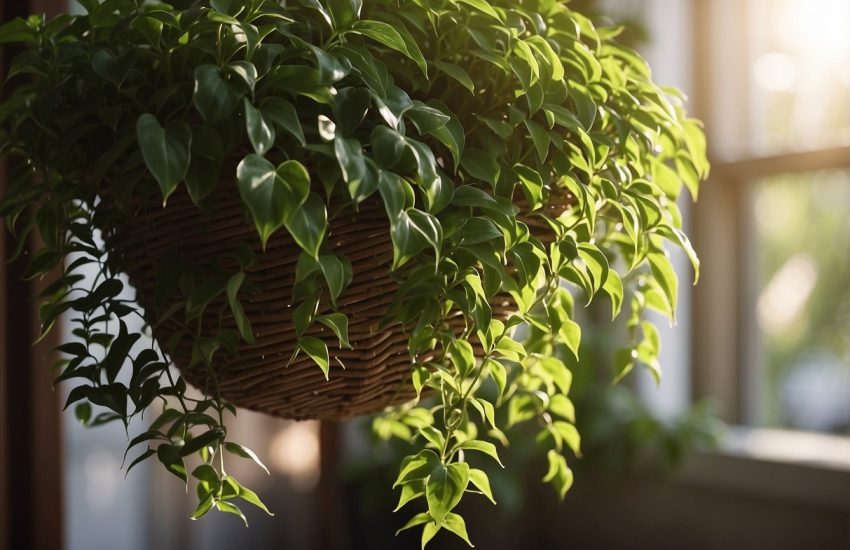How to Grow Begonia From Seed
Introduction
Begonia has a rich accumulation in the process from the past to the present. Today, there are hundreds of begonias and hybrids used for decorative purposes. People like to grow it at home the most. The growing conditions at home are divided into two main groups: decorative flowering and decorative deciduous begonia. Decorative flowering begonia is with smooth green leaves. It is an indoor plant with flowers of a wide variety of colors and shapes. Decorative deciduous begonias are of the same species as the other. But its leaves are distinguished by a rainbow color.
What is Begonia?
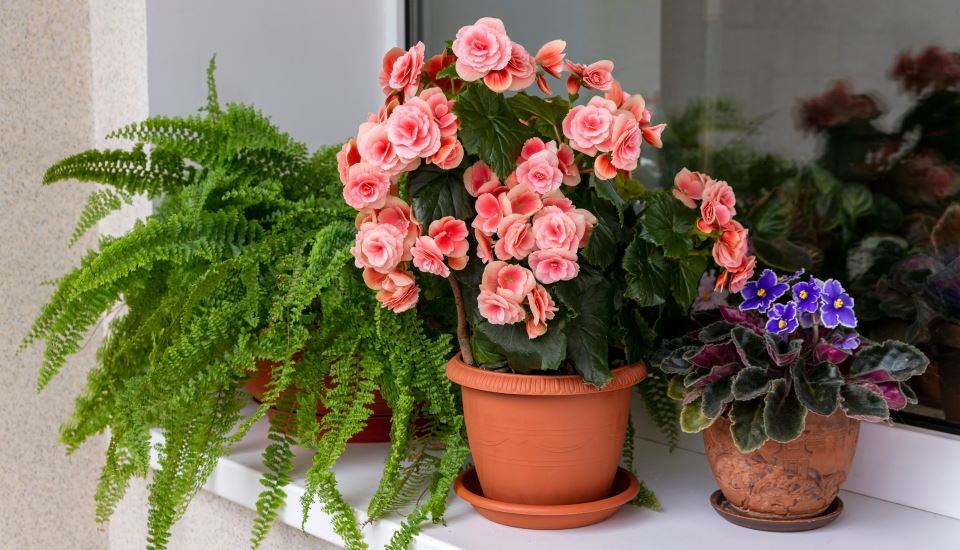
It is a plant that grows in the Begoniaceae family. It is grown in many environments as a hybrid type of perennial flowering. The genus was named after the French botanist. The begonia flower was first discovered in England. This plant was originally cultivated in South America for its lush leaves and colorful flowers. Its homeland is South America, South Africa, and Asia. It is a widely grown herb in homes and gardens here.
It brings spring to your home, just like cultivating nature in your home. Every flower has a meaning for growers. Begonia is a plant with special meaning for those who like to dream. According to another belief, the rapid growth and blooming of the begonia bring abundance to the house.
Structure and Types
Begonia has soft and fleshy stems. It has hundreds of species. Some consist only of leaves. Some also bear profuse flowers.
Begonia attracts the attention of flower lovers with its pink, white, orange, red, purple, and yellow colors. Begonias can be examined under three different headings as tuberous, flowering and leafy structurally.
Characteristics, Fragrance and Flowering Period
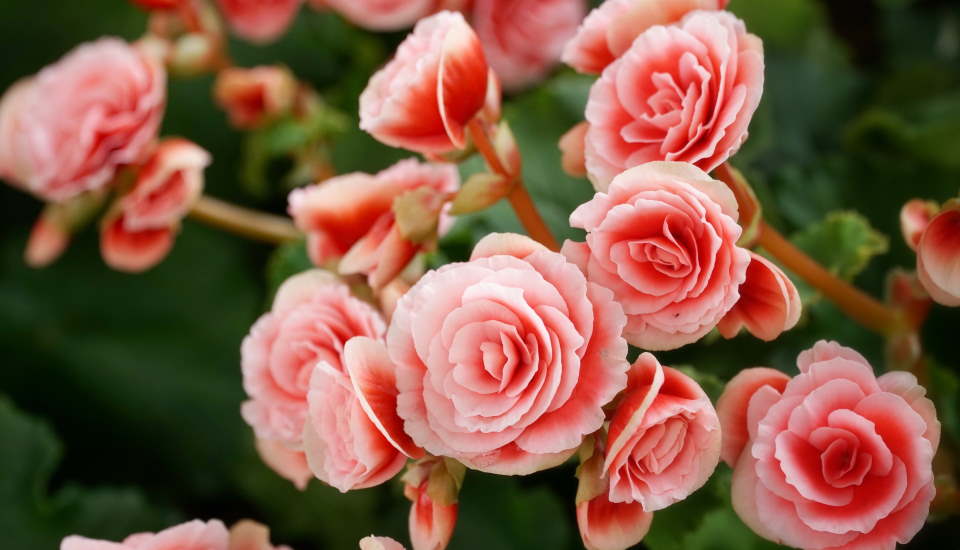
The reason the plant is popular is because of its high tolerance to heat and humidity. Begonias grow strong. But their height is not very high. It is known for its attractive, glossy, dark green leaves that are wing-shaped and long, often growing up to 20 cm. It does not like the wind. Begonias are also popular plants for their scent. It gradually increases its attractiveness in its fragrance. It produces clusters of small tuberous red flowers from late spring to autumn. It produces an abundance of showy flowers even during the long blooming period and scorching summers. These are some of the reasons begonias are such a popular garden plant.
Light and Temperature
Begonia plant species are heat resistant. It continues to bloom despite extreme temperatures. But it is not resistant to cold. Therefore, it should not be grown in regions with harsh winters. Before the onset of the frost season, you need to move the begonias indoors. You can bring it inside with a flower pot. Store begonias in a cool, dry place during the winter season.
Cane begonias handle sun or shade and can easily tolerate full sun. Here is a point you need to pay attention to about the temperature. Partial shade should be provided when the temperature is too high. Growing cane begonias takes patience. They are delicate plants. Because ideal areas are required to grow them, they should be areas with afternoon shade, good air circulation, and shelter from strong winds.
Red-winged begonias can tolerate full sun. It can also survive in full shade. But flowering will not be enough.
Ideal Temperature
In order for the flower to grow and bloom effectively, it needs to be in an environment with a temperature of 22 – 24 degrees.
Differences with Angel Wing Begonia

It is often confused with Angel wing begonia by people. Both qualify as cane begonias. While both are hybrid varieties, they are different plants. The leaves determine the difference between the two varieties. The leaves of the angel wing begonia have spots or a frosted pattern.
Begonia Living Environments
Indoor Begonia
It is best for them to use the soil mix when planting begonias. You can buy flower soil or compost. If you are going to plant, the first days of March will be suitable. First, plant it in a flower pot at 3 to 4 cm depth.
Outdoor Begonia
The seeds you sow for interior design in May begin to sprout in April – May. During these two months, you can transfer it to the garden. If you bought the potted seeds this way, you could plant them in the garden in April at the earliest. Be sure to water it regularly after moving it outdoors.
If you can’t spend most of your time at home and are likely to forget regular watering, we suggest you not to lose these plants.
Mulching is a good salvage agent for plants. Mulching helps the plant retain the moisture it needs. If you move it outdoors from April, plant it directly in the ground, preferably in a shaded location. Pay attention to its distance from other plant varieties in the area you are planting. Allow about 15 to 20 cm spacing when planting above ground or in flower boxes in the garden.
How to Plant and Propagate?
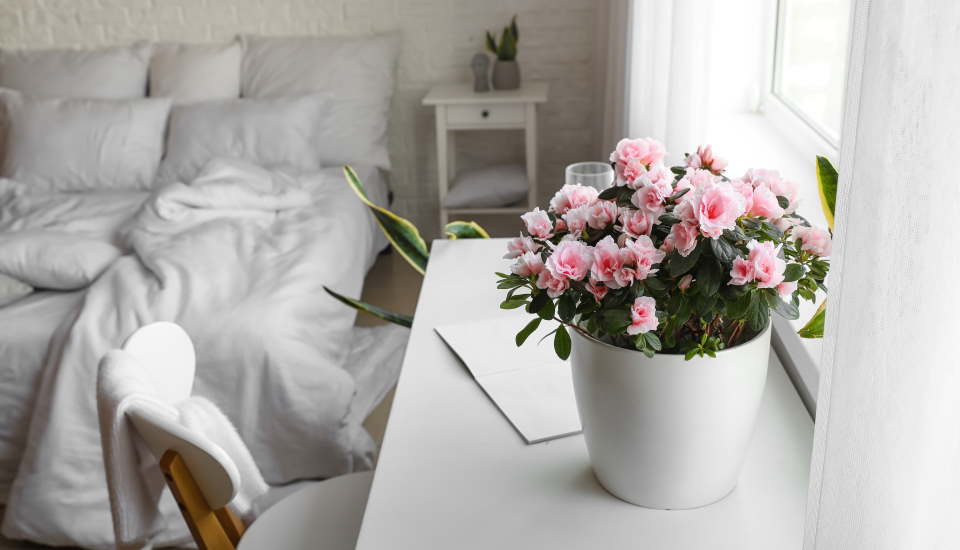
Planting
Before planting the begonia, you can get them both as seeds and flowers. Begonia seeds are as small as a grain of dust. If you buy it in seed form, first place the humus soil in the pot. Build level ground, then water the seed. Wait for the topsoil to dry slightly. Sprinkle the seeds on the soil sparingly.
Plant your newly purchased begonia flower in humus and fibrous soil after you get home. You decide the size. Laying pebbles on the bottom of the pot is a tip. Add this soil on top. Give life water and keep the soil moist.
Reproduce
The best months to do the duplication process are April and May. There is more than one option for propagating begonias. These:
It is made by separating the roots of the plant. Carefully separate the begonia sprouting from the roots. You can propagate it by transplanting this root into a new pot.
You can propagate by seed. Buy the seeds in December. Arrange the seeds on top of the mineral soil.
Push the seeds from the top and let them enter the soil. After 15 days, the seeds germinate. Then plant the begonias wherever you want.
Your other option is to “root in water. In this method, take a branch from the plant. Soak in water for one month. Roots grow. After they grow, plant the leaves in the pot of your choice.
Pruning and Maintenance
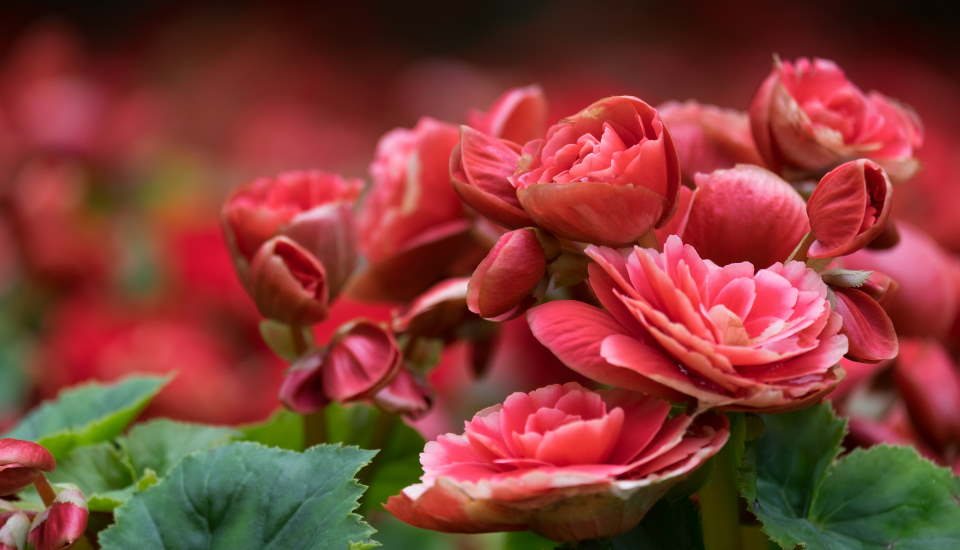
Planting and care are the main factors that ensure better growth and flowering for the plant. This is the issue that needs the most attention. Because things like location, water, pot, soil, and pruning are all about the care of the flower. The following useful information supports you to grow begonias professionally:
- Potted: The roots of this plant are small. For this reason, you can choose small pots. After the roots start to grow, you can change the pot. You can change the pot in the spring (usually in April). You can buy a large pot for your plant.
- Location: The first thing that comes to mind when talking about location is the sun. Begonias love to grow in the sun. If there is no sun, it prefers to be in semi-shade. It wants to get light and stay in the shade to cool off. It should be grown with direct sunlight during the flowering period. Turn your pot frequently as the weather changes frequently. It is necessary for all leaves to benefit from heat and light adequately and equally.
- Soil: People who like to grow begonias should know how to prefer rich mineral soils. The choice of humus soil is ideal for begonia. The soil should not be calcareous.
- Pruning: You should remove the wilted leaves of the begonia from the root. Pay attention to the gap that will form in that area to prevent airflow. You can pour cold silicone into that space. Collect the wilted leaves as soon as you notice them.
Begonia Propagation, Watering and Feeding
Spread
Begonias are usually propagated after flowering and when the leaves are completely wilted. That happens in November. You have a mission here. Remove the tubers from the ground with a precise movement. Wait for it to dry. Then, carefully divide it in half. Store each tuber in a dry, dark place until spring. When spring comes, behavior changes. You can plant it back this season. Begonias will grow if you follow this process. Ready to bloom again.
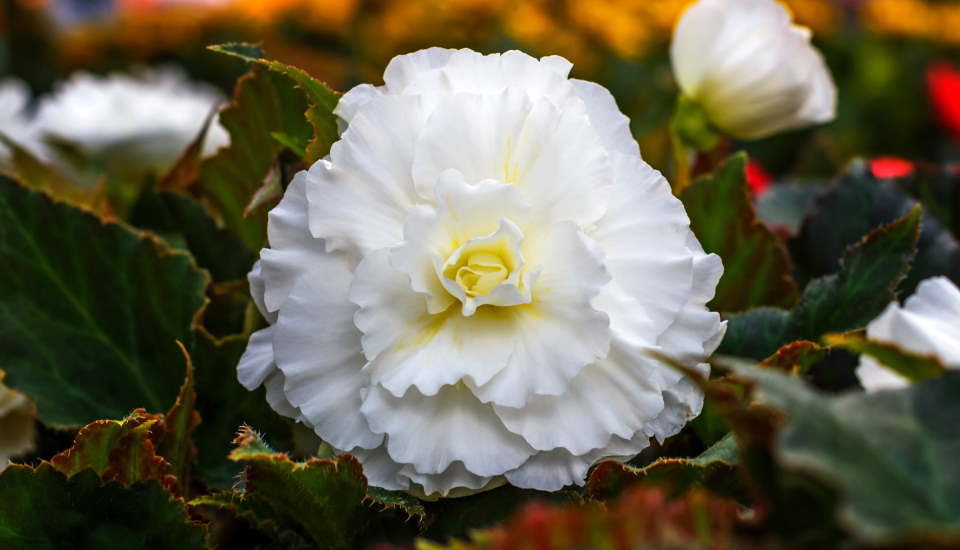
Irrigation
Begonias prefer moist soil. Water regularly and enough to keep the soil moist. Make sure not to overwater the plant. The plant is somewhat drought tolerant. It does not grow in extreme drought. Therefore, less watering is better than over-watering. There are basic rules for watering. The first of these rules is to allow a depth of 5 to 7 cm from the top of the soil to dry out between waterings.
Nutrition
Its feeding with manure varies according to the seasons:
Feed every other week in the spring and summer with a diluted, balanced liquid fertilizer.
Fertilize once a month in autumn and winter. Watch out for fertilizer burn. Many people do not pay attention to this when planting plants for indoor or outdoor design in their homes. Fertilize the plants when the soil is moist to prevent manure burn.
Harms / Diseases
The cause of the diseases that many plants have been exposed to from the past to the present may be caused by excessive irrigation. Begonias are also damaged for this reason. It can be affected by chewing insects, root rot (from overwatering), and powdery mildew. It suffers from whitefly and pest infestations, except for excessive watering. You know the effect of wet soils on plants. Moist soils cause root rot. Do not over-water or plant in over-draining soil. One of the other threats is bees. The enemy of red-winged begonias is bees. They are not attacked by larger herbivores.
To Prevent the Leaves from Drying Out
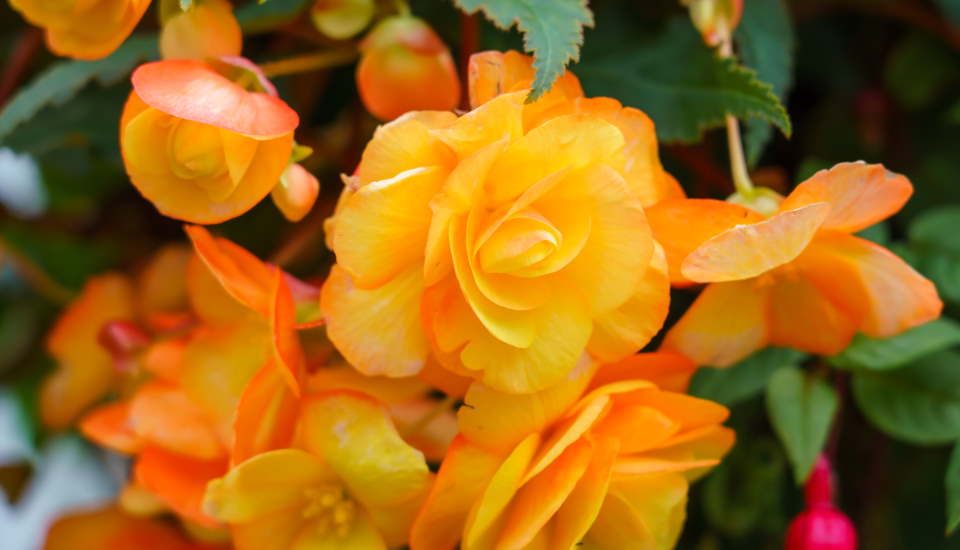
The Importance of the Seed
If you want the plant to struggle with the problem during the flowering and growth period, you must first be kind to the seed. Because the seed is just the beginning of the story. The seed of the begonia is the youngest actor in this story. So here are a few tips for being nice to them:
- Give life water to the seed first. Put in a handful of soil to conserve moisture. Do not water the seed for three days. Then give life water again. Water the seed again after 7 – 10 days.
- The germination period of seeds varies according to the plants. Substances such as water, light, and heat directly affect this process. Be patient with each plant.
- Follow the process. The seed germinates first. Roots grow. These roots ensure that the young seedling sprouted from the seed is firmly attached to the soil.
- Do not let the seed sink in water. If the seed floats, it cannot complete its development.
- Some seeds germinate with more difficulty. Fortunately, begonias do not have such a seed. You are lucky!
Suggestions for not drying
- You can take vitamins that protect your plant and ensure its healthy growth.
- Transfer from narrow areas to large areas as the plant grows.
- Buy pots with holes.
- Pay attention to the position of the flower. It should not be exposed to the sun for a long time in extremely hot weather. Remember that begonias love to grow in the shade.
- Don’t forget to water your plant. It should not be dehydrated for a long time. Start watering from the roots first. You can spray the wide leaves with water.
The Final Verdict
To sum up, everything that has been stated so far in this article, we have gathered important information about begonia for you in this article. The story starts with a seed that grows colorfully. Since it is the most preferred breed in the category of houseplants, you can use it for a long time with detailed information and proper care. You can get the flower as a seed or as a flower. Begonias taken as seeds grow healthy with the right watering and care.
You may also be interested in:
Pasque Flower : General Characteristics
How to Grow Morning Glories Indoors
The Symbolism of Flowers : What Do Colors of the Flowers Mean?

